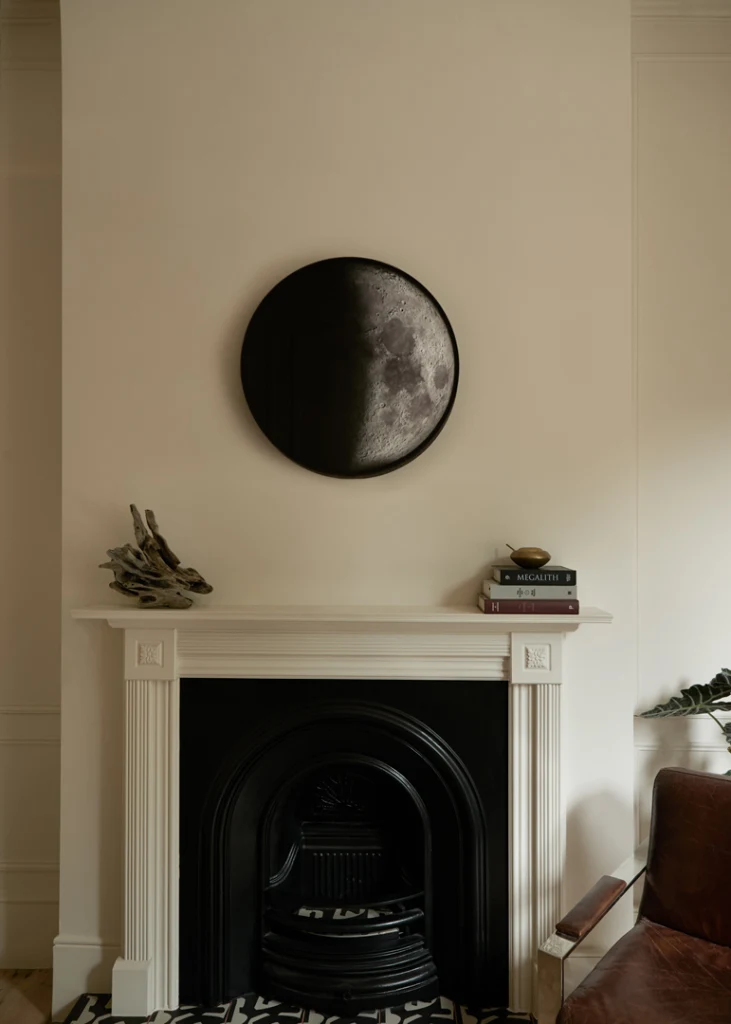Light designs inspired by the solar system are nothing groundbreaking—from the star-based night-lights in childhood bedrooms to the kitschy astronaut lamps that seem to appear on every budget-friendly home goods site. But a new lunar light from the design studio Relative Distance is taking that concept and elevating it to luxury design-object status, using precision optics to render a high-fidelity replica of the Moon and its phases in real time.
The light, called Phase, is currently available for preorder, in a limited run of 28 (each light will cost £30,000, or about $39,000). Phase comes in two backing colors inspired by lunar regolith, the fine layer of dust that covers the Moon’s surface: Ilmenite, which is typically a steel gray, and Feldspar, which is a lighter grey hue. It uses custom optic technology and more than 15,000 satellite images from NASA’s Lunar Reconnaissance Orbiter to capture the Moon’s waxing and waning down to the smallest minutiae.

Phase is the first-ever product by Relative Distance, which specializes in “durational light-based artworks.” The studio was founded in 2020 by designers Dev Joshi and Roland Ellis, who have spent the past four years perfecting the precision optics that power Phase. While this isn’t the first lamp attempting to replicate the moon, nor even the first object based on images from the Lunar Reconnaissance Orbiter, it is the first to combine both pursuits (and with a high-tech twist).
“The Moon has been represented in our media for 1000s of years—documenting something as a way to understand it is a very human instinct,” Joshi and Ellis wrote in an email to Fast Company. “As the Moon is such a common muse and point of reference, to feel ‘correct’ and to be effective, Phase has to be as realistic as possible—this way we avoid a sort of uncanny valley.”

Designing a high-tech replica of the Moon
To create the ultrarealistic replica, the studio used NASA’s composite image of the Moon’s near-side surface. The image uses over 15,000 wide-angle shots of the Moon, taken between 2009 and 2011 by the Lunar Reconnaissance Orbiter, which have then been combined in a mosaic to accurately capture the surface’s dips and craters.
The case backing that actually holds Phase together is made out of a composite meant to mimic Lunarcrete, a hypothetical building material made out of regolith that scientists posit could be used to make structures on the Moon.
But the real challenge for Phase’s designers was capturing the distinct quality of moonlight—and that’s where the light’s custom precision optics come in. Joshi and Ellis developed a precise combination of smoked glass and light diffusion to achieve a kind of illusion that makes Phase look like the actual moon, not a digital representation.
“Moonlight is challenging to re-create as our exposure to it is subject to many factors (such as time of year, atmospheric density, and your position on Earth),” the designers explain. “Phase’s design strives to produce light that feels like it isn’t coming from a lamp or a screen—sources that we are familiar with—and instead glows in a way evocative of moonlight. The optical assembly steers the light to create the crescent edges of the passing lunar phases as well as controlling the image contrast, so that viewers can see the detail of the image embedded under the glass.”

To use Phase, users need only enter the current date and time (to sync the display with the current Moon phase) and select between three brightness modes—no app or Wi-Fi required.
“Wanting to create work that conveys a sense of calm is a reaction to the modern world we live in,” the creators wrote of the Phase’s simple-to-use design. “We are inundated with demands on our attention. We wanted to design something that is the antithesis of a screen.”